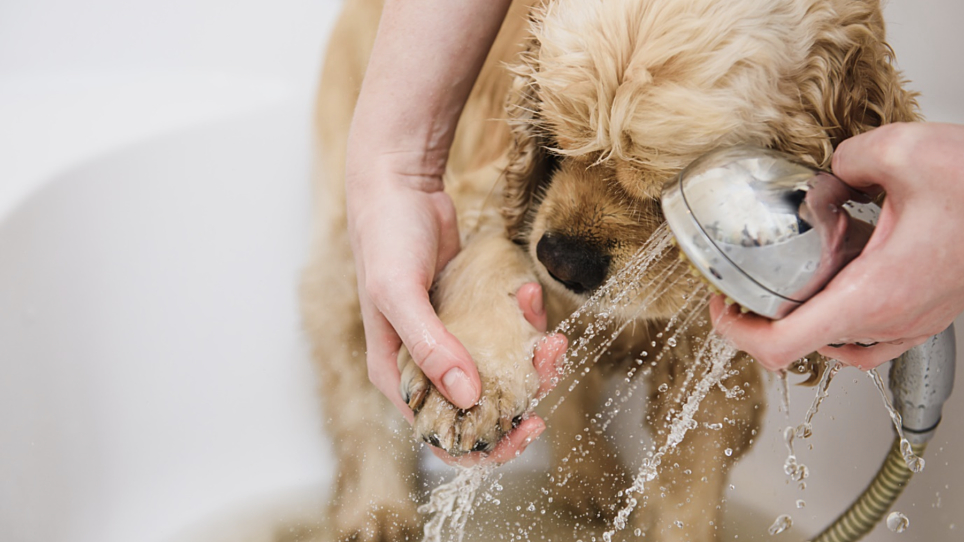Grooming your pets is an essential part of being a responsible pet owner, but it’s also a great way to spend quality time with them and strengthen your bond.
We’ve put together a detailed explanation as to why grooming your pets is important, as well as a guide on how to groom cats and dogs depending on the type of coat they have.
Why is grooming important?
Sitting down to groom your pet is a great opportunity to monitor the health of their coat, which can help you identify any potential issues early. If you spot anything like a wound or a lump, or you notice that the condition of your pet’s coat or skin has changed between grooms, you should contact your vet.
Grooming also removes dead hair, dust, dead skin and loose hairs, and prevents serious tangling and matting of fur.
If you have a pet whose coat is prone to matting, like a long-haired cat or dog, grooming them will make sure their coat stays healthy and mat-free. A matted coat can be very uncomfortable for your pet if it gets out of hand, so regular grooming will help them stay happy and healthy.
Cats are very good at keeping themselves clean, so you don’t need to do regular bathing like you do with a dog.
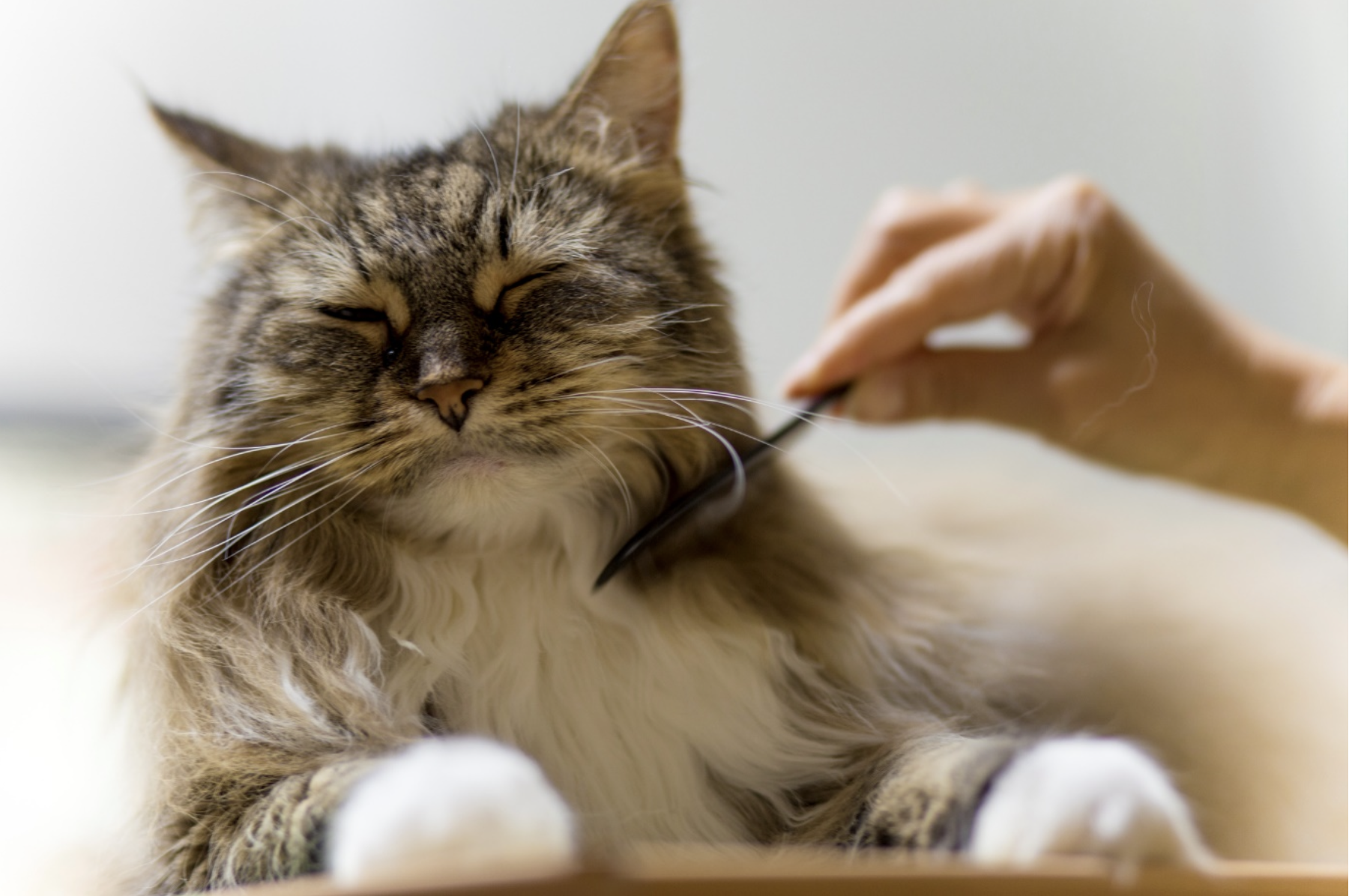
How to groom your cat
Most cats are already pretty good at keeping themselves clean, so you may only need to worry about brushing them and keeping their coat healthy.
Cats have three hair coat lengths, short, medium, and long. If your cat has short hair, they should be groomed every 1-2 weeks, but if they are a long-haired breed you will need to do it more often. The key to success with cat grooming is to groom them regularly for short periods of time.
No matter how old they are, if they’re not used to being groomed, they will need a slow introduction to the process – keep sessions short at first and give them treats to make it a positive experience for them.
If you notice your cat twitching, swishing their tail, growling or hissing at you, it means they’re not comfortable and you need to reassess how you are grooming them.
The process – long-haired cats
- Gently lift their fur and check for evidence of fleas. Look for any bald patches, wounds, or lumps. If you notice anything unusual or flea dirt or fleas, consult your vet.
- Run the comb through their fur from head to tail in the direction the fur is growing. Comb all over their body including the chest and abdomen, concentrating on one section at a time to remove dead hair and tangles. Take extra care around the armpit areas, as this is where the fur can be extra knotty. If you do come across any knots, be sure to treat them gently. Slowly tease them apart from root to tip with your fingers.
- Finally, don’t forget to check their ears, paws and nails. If there is any dirt or wax on the inner flap of their ears, paw injuries or nails that are overgrown, speak to your vet.
The process – short-haired cats
- Look through their coat to see they don’t have any, fleas, flea dirt. Look for any bald patches, wounds, or lumps. If you notice anything unusual or flea dirt or fleas, consult your vet.
- Run the comb through their fur from head to tail in the direction the fur is growing. Comb all over their body including the chest and abdomen, concentrating on one section at a time to remove dead hair and tangles. If you do come across any knots, be sure to treat them gently. Slowly tease them apart from root to tip with your fingers.
- If there is any dirt or wax on the inner flap of their ear in their ears, paw injuries or nails that are overgrown, speak to your vet.
How to groom your dog
There are several different aspects to grooming a dog, depending on their breed and the type of coat they have. We recommend that you bath your dog at least once every three months. However, some may require more regular bathing if they have skin problem or roll in something super smelly.
If you have a puppy, it’s a good idea to get them used to being groomed as early in life as possible. If you adopt an adult dog that isn’t used to being groomed, there are ways to help them get used to the process.
Brushing your dog
If your dog shows apprehension about being brushed, it’s important to take it slowly at first. The key to success if to do short sessions many times and use treats to reward good behaviour.
Start off by getting the brush out but not using it – do this a few times until the dog is used to having the brush around.
You can slowly progress to touching your dog with the brush, and then eventually stroking them a few times, but make sure you’re giving them treats so they associate the brush with a positive experience.
This process may take time, and it could even be a number of weeks before they’re comfortable with being brushed.
The way that you brush your dog will largely depend on the type of coat they have.
Smooth, short haired coats
Use a rubber brush to remove dead skin and dirt followed by a bristle brush to remove dead hair.
Short dense fur
This type of coat is prone to matting. Use a slicker brush to detangle and a bristle brush to collect dead hair.
Lony silky coats
Use a slicker brush to remove tangles followed by a bristle brush.
Long matted hair
Groom daily using a slicker brush for tangles and bristle brush to finish.
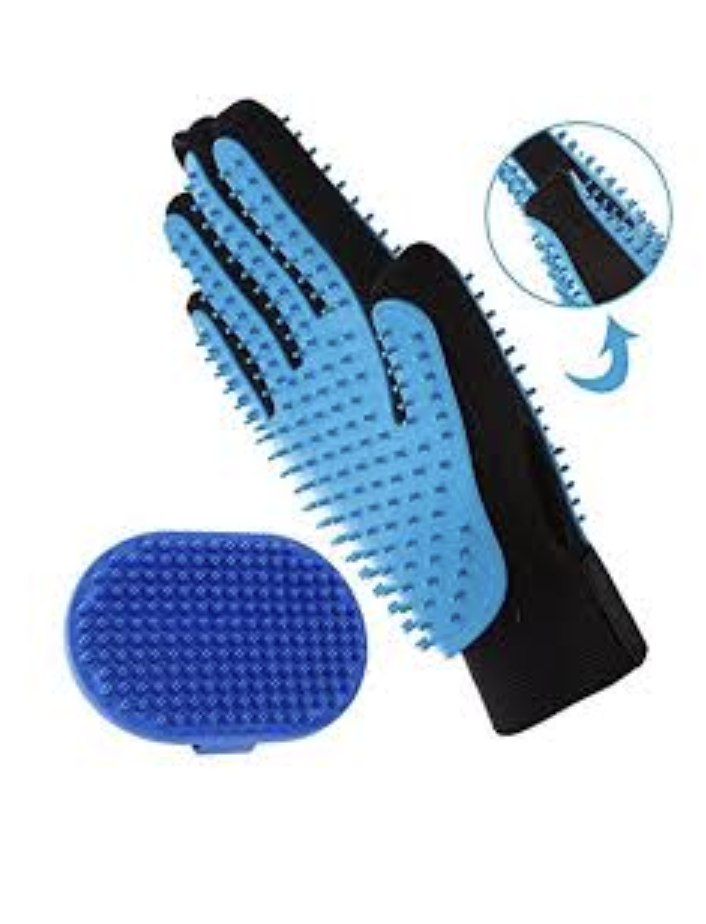
Rubber brush and glove
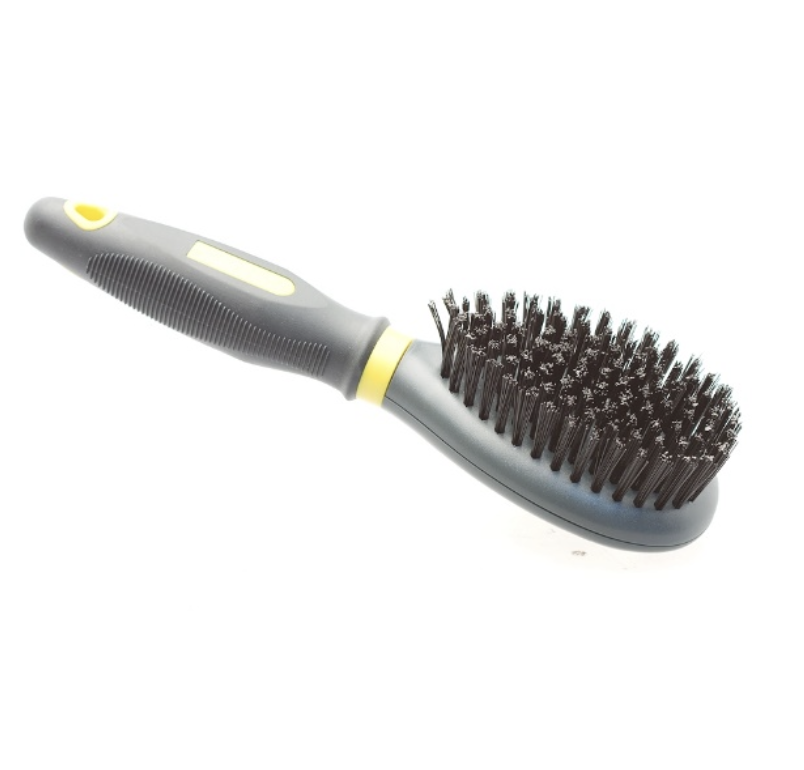
Bristle brush
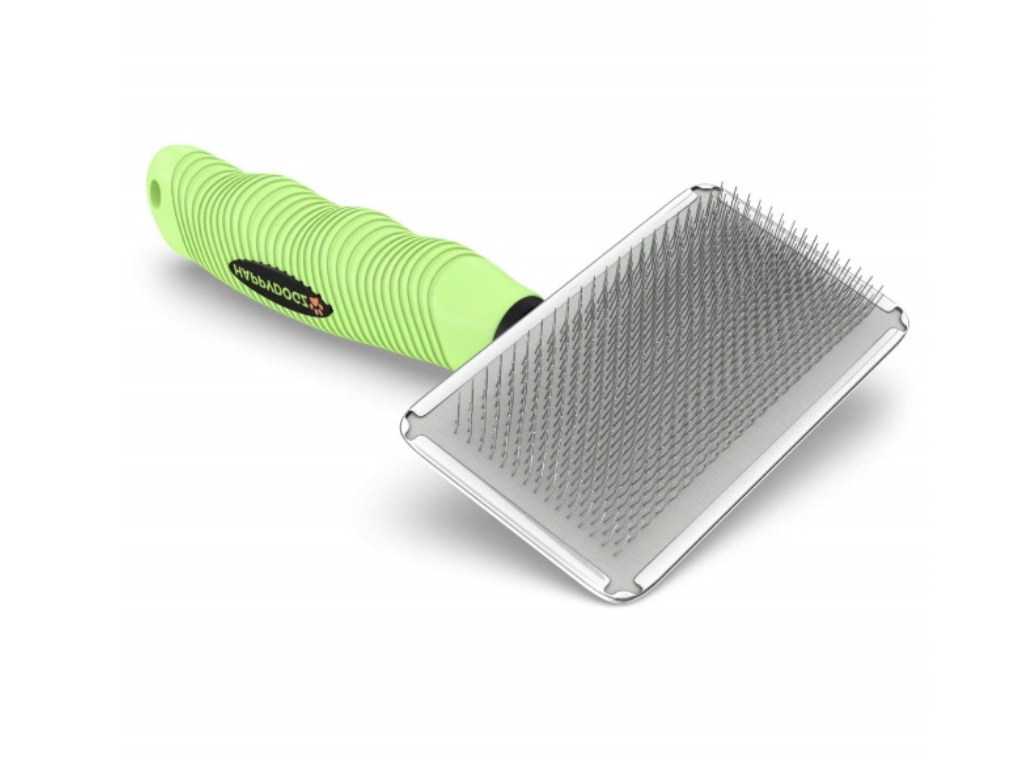
Slicker brush
Bathing your dog
We recommend that you bath your dog at least once every three months. However, some may require more regular bathing if they have skin problem or get themselves dirty.
When you bathe your dog, it’s important that you use dog-specific shampoo and not a human shampoo which could irritate their skin. If your dog has skin problem your vet will recommend what shampoo to use.
What you’ll need:
- Dog shampoo
- A bathtub with a non-slip mat (if you prefer to bathe your dog outdoors, just make sure it’s a sunny day!)
The process
- Look for any flea dirt, fleas, or mats in your dog’s fur. If you find any matting, try and brush these out beforehand as the shampooing process can make these worse.
- Wet your dog’s fur with lukewarm water before applying the shampoo, being careful to avoid their face, mouth, and ear areas. You can sponge wash these with clean water, if necessary.
- Massage the shampoo in for at least five minutes for a thorough cleans.
- Thoroughly rinse all shampoo off their fur, as any leftover shampoo can irritate their skin.
- Dry them with a towel. If they aren’t comfortable with a towel dry. Remove the excess water from their coat and, you can let them dry naturally. It will need to a warm day for this method to be used otherwise you dogs will get very cold.
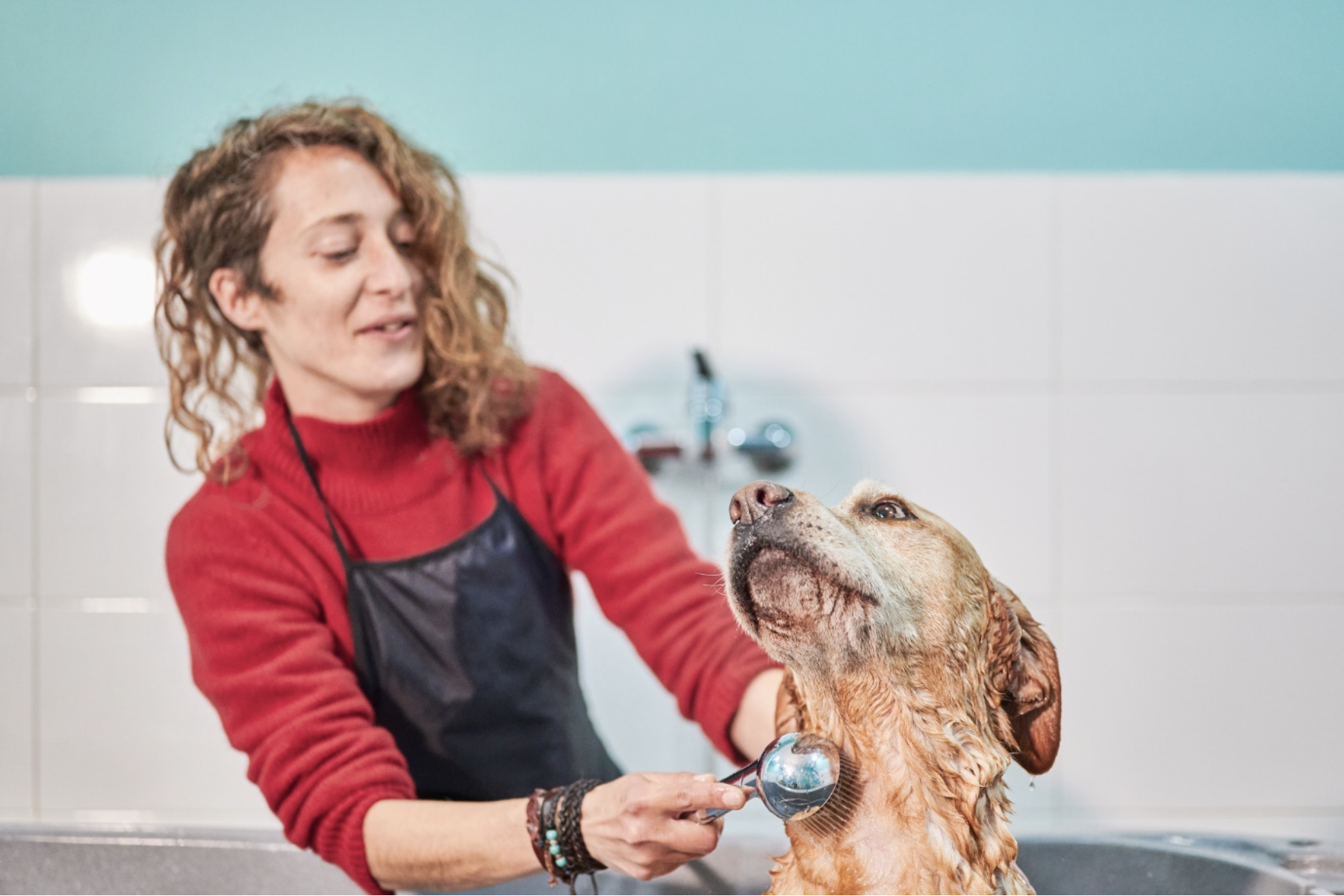
Bathing a puppy
Puppy bathing is the same as for adult dogs, however puppies can be extra wiggly. To keep them still try putting a floating toy in the bathtub so they can focus on that rather than wriggling or mouthing you. If you get them used to the routine when they are young it is going to be much easier when they get bigger.
Using a professional dog groomer
Like many dog owners, you may wish to leave the grooming to the professionals.
You can ask your vet for recommendations or ask a friend who has a dog to find out where they have them groomed. Some vets offer a grooming service too.
You can also look at online reviews of any groomer you’re considering using, and even ask them for a tour of their facilities. A good, reputable groomer would be happy to show your around.
Are you protecting your pet’s health? To find out more about keeping your pet as healthy as possible, click the button below!
